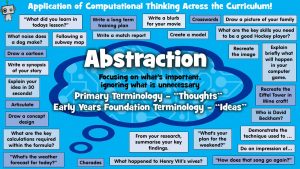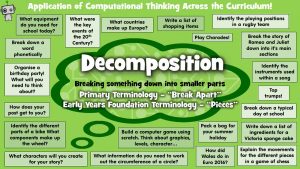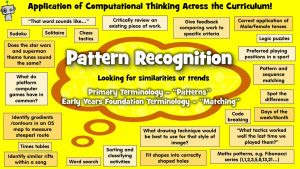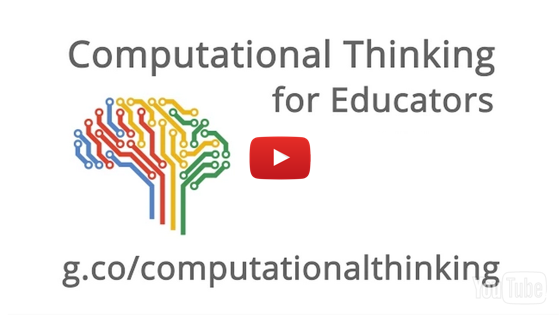Computational Thinking
Computational thinking is recognized as a key skill set for all 21st century learners – whether they intend to continue with Computing Science or not, it’s an important skill to identify and often exists within existing curriculum and classroom assignments. Computational Thinking can be grouped into four main areas:
- seeing a problem and its solution at many levels of detail (abstraction)
- thinking about tasks as a series of steps (algorithms)
- understanding that solving a large problem will involve breaking it down into a set of smaller problems (decomposition)
- appreciating that a new problem is likely to be related to other problems the learner has already solved (pattern recognition)
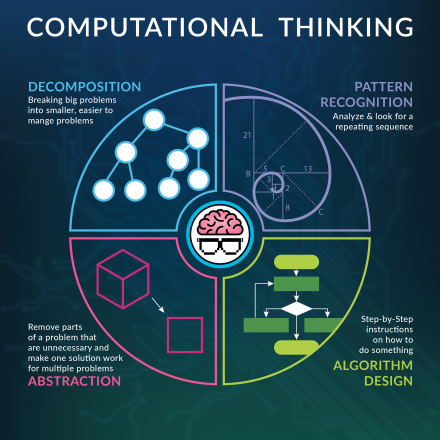
https://www.youtube.com/watch?v=mUXo-S7gzds
Applications of Computational Thinking Across the Curriculum
BC Ministry of Education – Computational Thinking Teacher Training Package
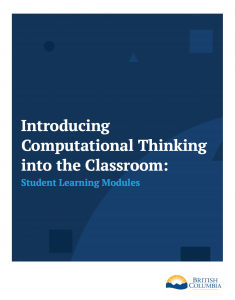 Train The Trainer – Workshop Overview
Train The Trainer – Workshop Overview- Introducing Computational Thinking in the Classroom: Student Learning Module
- Introducing Computational Thinking in the Classroom: Teacher Training Package
- Project mapping to ADST 6-9 Competencies (example)
- Student Worksheets
French Versions:
- Trousse pour la formation des enseignants
- La pensée informatique dans la salle de classe: Modules d’apprentissage pour les élèves
Want to learn more about Computational Thinking?
Check out this excellent Computational Thinking for Educators course from Google



